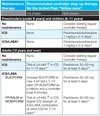Paeds Flashcards
(98 cards)
Dose of ondansetron
0.15 mg/kg PO/IV
Peds GCS
E: 4= Spontaneous, 3 = voice = 2 pain 1 = none
V: 5 = smiles, orients to sounds, interacts, 4 = cries, consolable, inappropriate interactions, 3 = inconsistently inconsolable, moaning, 2 = inconsolable, agitated, 1 = none
M: 6 = moves purposefully, 5 = withdraws touch, 4 = withdraws pain, 3 = flexes (decorticate), 2 = extends (decerebrate), 1 = none
What to send stool for in ED
- Stool for fecal leukocytes (>5/hpf), blood or both, identifies 90% of invasive disease; if neg, may not need to send for culture.
- C&S, esp. E.coli 0157:H7
- C.diff
- O&P
ORT for Kids
- Zofran 0.15 mg/kg ODT
Pedialyte (not Gatorade): for mild-moderate dehydration. Calculate desired volume based on dehydration chart, give 25%/h over 4h.
Vx: add 2 mL/kg for each episode during ORT, start again 10 min after vx
Dx: add 10 mL/kg for each episode during ORT
After 4h, if not better, restart for another 4h
After 8h, if not better, admit + IVF
Paeds IV Fluids
Shock
20 mL/kg NS over 5-15 minutes, repeat until improvement
CBG, if <2.8 mmol/L:
0-1 month = D10 4 mL/kg
1 month - 8 years/25 kg = D25 2 mL/kg
>8 years = D50 1 mL/kg
CBG Q 30-60 minutes
After initial resuscitation/Rehydration Phase
Total Deficit = %dehydration X kg X 1000 mL
First 9 hours: 1/2 deficit and 1/3 maintenance
9-24h: 1/2 deficit and 2/3 maintenance
Isonatremic/Hypernatremic: D5W 0.45% NS with 20 mmol/L KCl (KCl once voided)
Hyponatremic (<130 mmol/L): D5W 0.9% NS with 20 mmol/L KCl

Dose of PRBC for transfusion in trauma in Kids
10 mL/kg
Urine output goals in trauma
Infants
Children
Adults
Infants: 2 mL/kg/h
Children: 1 mL/kg/h
Adults: 0.5 mL/kg/h
Hypertonic Saline Dose for IICP in Children
3-5 mL/kg 3% Saline
Yellow Zone Asthma Therapy

Flovent Preparations
50 mcgs, 125 mcgs, 250 mcgs
Abnormal Values on WBC for infants
WBC <5 or >15
Band/neutrophil > 0.2
Bandemia >1, 500 mm3
ANC > 10, 000
Abnormal UA for infants
> 10 WBC or +ve Gram Stain
Accepted Sources of Fever for peds (>3 months)
HSV/Gingivostomatitis
Herpangina/Ulcerative stomatitis
RSV
Croup
Flu
Varicella
Viral Exanthem (Rash)
Enterovirus, coxsackie, HFM, echo, rhino, entero
Abx doses for Peds FWS
< 28d old: amp + gent or cefotaxime (if >8 days old), vanco (for pneumo resistance), acyclovir (if pleocytosis)
>28d old: cetriaxone +- vanco (for MRSA skin infections/severe infection), +- acyclovir
Amp: 50 mg/kg
Cefotaxime: 50 mg/kg
Vanco: 15-20 mg/kg
Ceftriaxone: 100 mg/kg (meningitis dose), 50 mg/kg (reg dose)
Acyclovir: 60 mg/kg/day divided q8h
FWS Algorithm
6 months - 3 years
UA + culture for circumsized boys up to 6 months, uncircumsized boys up to 12 months, and girls up to 24 months. Offer UA to all children up to 24 month with T >39 deg C
>3 y, no routine workup necessary for well-appearing
Prevalence of SBI in peds FWS (for a well-appearing child)
0-14 days: 1/10
14-28d: 1/20
28-60 d (pre-vaccine): 1/100
28-60 d (post vaccine): 1/1000
60-90d: 1/1000 - 10, 000
>90 d: > 1/10, 000





















